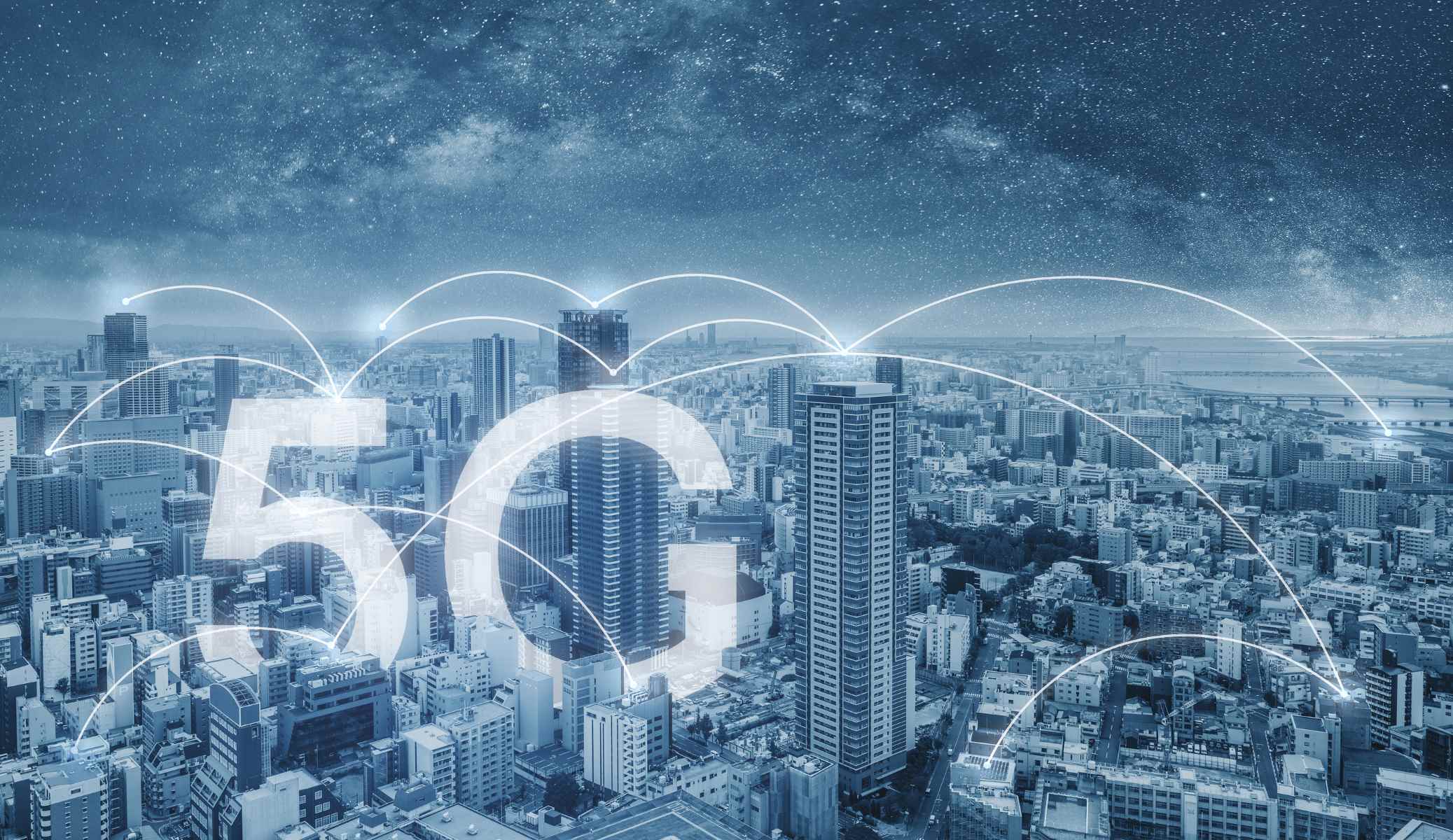Introduction
The advent of 5G technology has been heralded as a major breakthrough in global connectivity. With promises of lightning-fast download speeds, low latency, and the potential to revolutionize various industries, 5G has captivated the world’s attention. However, despite its immense potential, the deployment of 5G technology has been met with various challenges and has even been banned in some countries.
This article aims to explore the reasons behind the ban on 5G in certain countries. It is important to note that the decision to ban 5G is not universal and varies from country to country. The reasons behind the bans are multifaceted and can be attributed to factors such as security concerns, health concerns, lack of infrastructure, economic considerations, and political reasons.
Understanding the complexities surrounding the ban on 5G is essential to grasp the implications it has on global technology advancement. While some countries have enthusiastically embraced 5G and are leading the way in its implementation, others have taken a more cautious approach, placing restrictions and, in some cases, outright banning the technology.
In the following sections, we will delve deeper into each of these factors and explore how they contribute to the decisions made by certain countries. This article aims to provide a comprehensive overview of the reasons behind the ban on 5G, shedding light on the challenges and concerns facing governments and their citizens.
It is important to approach this topic with an open mind, weighing both the potential benefits and risks associated with 5G technology. By doing so, we can better understand the decisions made by countries to either embrace or ban the technology. So, let’s dive into the intricacies of the 5G ban and explore the reasons behind it.
Security Concerns
One of the primary reasons behind the ban on 5G in some countries is the concern over its potential security risks. As 5G technology relies heavily on interconnected networks and a vast number of devices, it creates a larger attack surface for cybercriminals to exploit.
The main apprehension centers around the involvement of certain telecom equipment manufacturers, particularly those from countries that are deemed to have close ties with their governments. The fear is that these manufacturers could be coerced or compelled to embed backdoors or other vulnerabilities into their products, allowing unauthorized access to critical infrastructure and sensitive data.
Countries that have banned 5G, such as the United States and Australia, express concerns about the involvement of specific companies that are believed to have close associations with their respective governments. The fear is that these companies could potentially facilitate espionage or sabotage, posing serious threats to national security.
Furthermore, the complex and interconnected nature of 5G networks raises concerns about data privacy. As more devices become connected to the network, the risk of personal information and sensitive data being compromised increases. This is particularly worrying given the rise in cyber threats and the increasing importance of protecting user data.
While proponents argue that stringent security measures can be implemented to mitigate these risks, the ban on 5G in certain countries reflects a cautious approach, prioritizing national security above all else.
It is important to note that these security concerns are not exclusive to 5G technology. Previous generations of wireless technology, such as 4G and 3G, have also faced similar concerns. However, the interconnectedness and reliance on 5G for critical infrastructure have heightened these concerns and led to the decision to ban the technology in some countries.
Health Concerns
Another significant factor contributing to the ban on 5G in certain countries is the concern over potential health risks associated with the technology. While the scientific consensus affirms that 5G radio waves are within safe exposure limits, some individuals and organizations raise questions about the long-term health effects of prolonged exposure to higher-frequency electromagnetic radiation.
Critics argue that the higher frequencies used in 5G technology will result in increased exposure to radiofrequency electromagnetic fields (RF-EMF). They express concerns about the potential for adverse health effects such as cancer, effects on the reproductive system, and neurological disorders.
However, it is important to note that numerous scientific studies have been conducted to assess the health effects of RF-EMF radiation, including those specifically related to 5G. These studies have consistently found no conclusive evidence linking exposure to RF-EMF radiation from wireless networks, including 5G, to adverse health effects.
The World Health Organization (WHO) has classified RF-EMF as “possibly carcinogenic to humans” based on limited evidence. However, they have also stated that there is no convincing scientific evidence of any adverse health effects caused by exposure to RF-EMF radiation below the recommended limits.
Despite the lack of concrete evidence linking 5G to negative health outcomes, the precautionary principle is often invoked in making decisions regarding the deployment of new technologies. Some countries, citing concerns for public health, have chosen to ban or restrict the implementation of 5G until further research is conducted.
It is worth noting that countries that have chosen to proceed with 5G deployment have done so after considering the available scientific evidence and assessing the potential risks associated with the technology. They have concluded that the existing safety standards and guidelines set by regulatory bodies are sufficient to protect public health.
While health concerns remain a topic of debate, it is important to continue monitoring and conducting scientific research to ensure the safety of emerging technologies like 5G while striking a balance between technological advancement and public well-being.
Lack of Infrastructure
One of the challenges faced by countries considering the deployment of 5G technology is the lack of adequate infrastructure. The successful implementation of 5G requires a robust network of base stations and fiber-optic cables to support the increased bandwidth and capacity demands.
In countries where there is limited existing infrastructure or where the infrastructure is outdated, the cost of upgrading and expanding the network to accommodate 5G can be a significant barrier. The installation of new base stations and fiber-optic cables requires extensive planning, investment, and coordination with various stakeholders, including local authorities and telecommunication companies.
Countries that have banned 5G due to a lack of infrastructure often face challenges such as limited access to remote and rural areas, where the financial viability of deploying 5G infrastructure may not be feasible. In such cases, the focus may be on improving existing 4G infrastructure or alternative connectivity solutions as a more practical and cost-effective option.
Furthermore, the lack of infrastructure can impact the overall user experience and hinder the seamless integration of 5G technology into various sectors. Without a well-established and widespread network, the promised benefits of 5G, such as ultra-fast speeds and low latency, may not be fully realized.
Addressing the lack of infrastructure requires significant investment, long-term planning, and collaboration between government entities, telecommunication providers, and other relevant stakeholders. Countries that have chosen to ban 5G due to infrastructure challenges may prioritize allocating resources to improve existing connectivity before considering the implementation of 5G in the future.
It is important to note that infrastructure development is an ongoing process, and countries may revisit their decisions to ban 5G as their infrastructure improves and becomes more conducive to supporting the technology’s requirements.
In summary, the lack of infrastructure presents a major hurdle for countries considering the deployment of 5G. The cost, logistics, and coordination required to establish a comprehensive network infrastructure can influence a country’s decision to ban 5G until the necessary infrastructure is in place.
Economic Factors
Economic considerations play a significant role in the decisions made by countries regarding the deployment or ban of 5G technology. The implementation of 5G requires substantial investment in infrastructure, equipment, and research and development. The financial burden associated with rolling out 5G can be a deterrent for some countries, leading them to explore alternative strategies or delay its implementation.
For countries with limited financial resources, the cost of developing and maintaining a robust 5G infrastructure may outweigh the perceived benefits in the short term. This is especially true for developing countries where other basic needs, such as healthcare, education, and poverty alleviation, take precedence over investing in advanced technology.
Additionally, the return on investment for 5G deployment may not be immediately apparent or guaranteed. It may take years for the full potential of 5G to be realized and for the accompanying economic benefits to materialize. Governments must carefully consider the long-term economic viability and potential returns on their investment before committing to the deployment of 5G.
In some cases, c
Political Reasons
Politics can also play a significant role in determining the stance on 5G technology deployment in certain countries. Political factors, such as alliances, rivalries, and geopolitical considerations, can inform the decision to either embrace or ban 5G.
One of the primary political concerns surrounding 5G is the issue of national sovereignty and independence. Countries have expressed concerns about the potential influence or control that foreign companies and governments may exert through the deployment of 5G technology. The fear is that relying on foreign entities for critical telecommunications infrastructure could compromise national security and jeopardize sensitive information.
In some cases, the decision to ban 5G may be influenced by political tensions or trade disputes between countries. Countries engaged in contentious relationships may view the involvement of specific telecom equipment manufacturers as a potential threat to their national interests. This political dimension can result in the ban of 5G technology from certain vendors or countries deemed to pose a risk.
Furthermore, political considerations can also influence the decision to foster domestic innovation and development of 5G technology. Governments may prioritize supporting and promoting their domestic technology companies, creating an environment conducive to fostering local expertise and ensuring economic benefits stay within their borders.
Political reasons for banning 5G can also stem from concerns over surveillance and privacy. The interconnected nature of 5G networks raises questions about potential invasive surveillance capabilities and the collection of large amounts of personal data. Countries may choose to ban or tightly regulate 5G to protect individual privacy rights and safeguard against potential abuses.
It is important to note that political decisions regarding 5G are complex and interconnected with various factors. National interests, strategic alliances, economic considerations, and geopolitical dynamics all shape the political landscape surrounding the deployment of 5G technology.
In summary, political reasons can influence a country’s decision to ban or restrict 5G technology deployment. Concerns around national sovereignty, security, economic interests, and geopolitical considerations all play a role in shaping political decisions regarding 5G technology.
Conclusion
The ban on 5G technology in some countries can be attributed to a combination of factors, including security concerns, health concerns, lack of infrastructure, economic considerations, and political reasons. While the decision to ban 5G varies from country to country, it reflects the complexities and challenges associated with the deployment and acceptance of this transformative technology.
Security concerns surrounding potential vulnerabilities and risks associated with 5G networks have led to bans in certain countries. The fear of unauthorized access and potential espionage poses significant threats to national security, leading to cautious approaches and restrictions on 5G implementation.
Health concerns related to exposure to radiofrequency electromagnetic radiation have also contributed to the ban on 5G in some countries. However, scientific evidence has not conclusively linked 5G to adverse health effects, and existing safety standards are believed to be sufficient to protect public health.
The lack of adequate infrastructure, both in terms of physical networks and cost-effective deployment, has hindered the widespread adoption of 5G. Countries with limited resources and infrastructure challenges may choose to prioritize existing connectivity solutions before considering the implementation of 5G in the future.
Economic considerations, including the cost of infrastructure development and uncertainty regarding returns on investment, can influence a country’s decision to ban or postpone the deployment of 5G technology.
Political factors, such as concerns over national sovereignty, geopolitical rivalries, and protection of domestic industries, can play a significant role in shaping decisions regarding 5G bans. Political tensions and considerations of surveillance and privacy can also contribute to the prohibitions in some countries.
In conclusion, the ban on 5G in certain countries is a complex issue influenced by a multitude of factors. While the reasons for the ban vary, it is important to continue monitoring and evaluating the risks and benefits associated with 5G technology. By striking a balance between technological advancement, national security, public health, and economic considerations, countries can make informed decisions regarding the deployment of 5G technology that align with their specific circumstances and priorities.

























